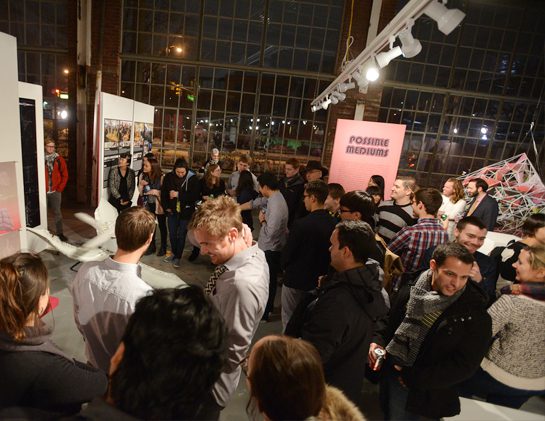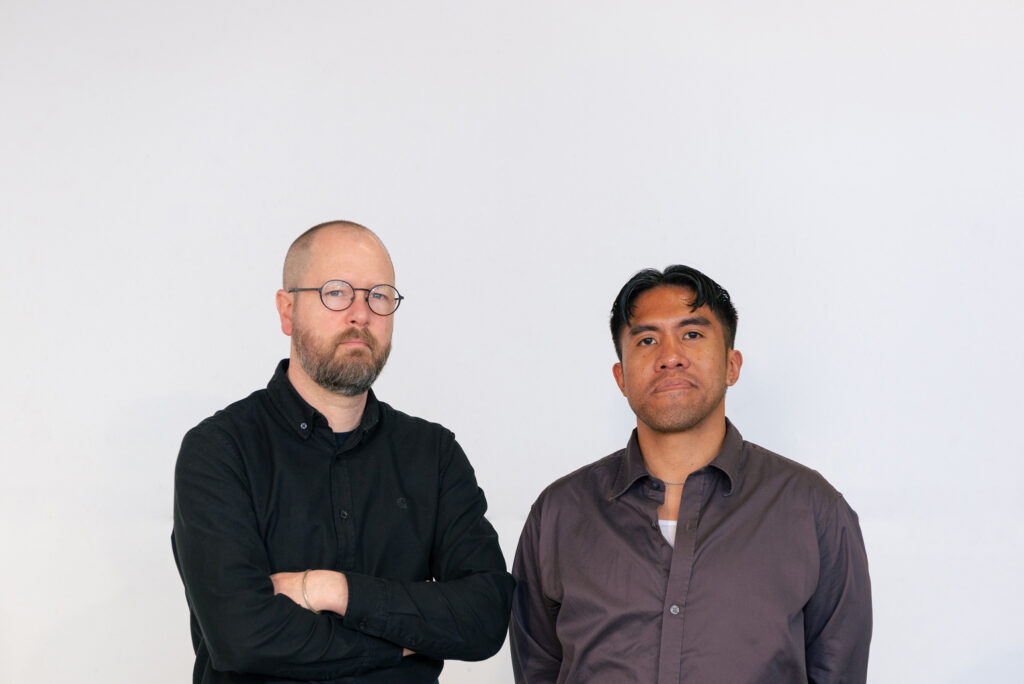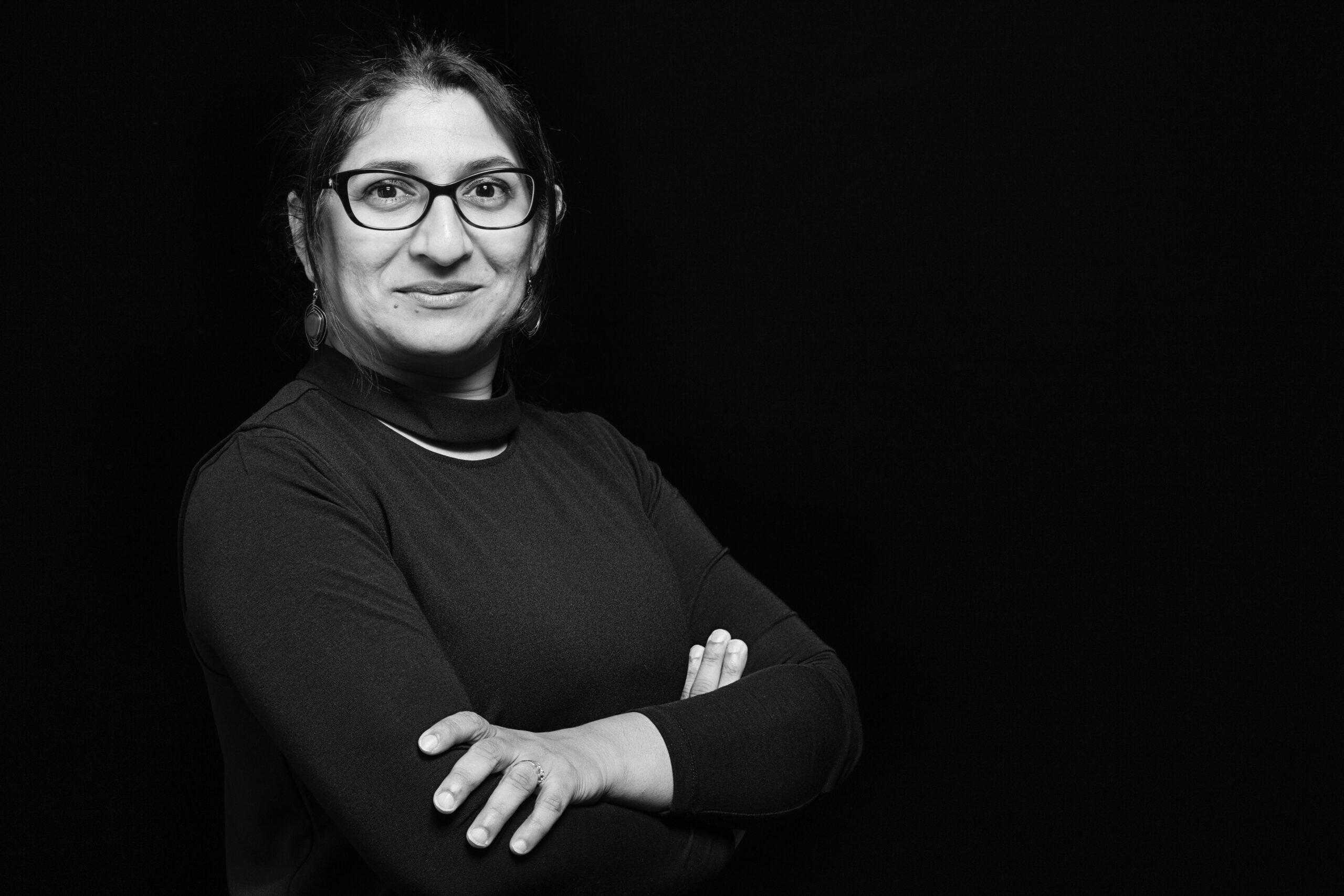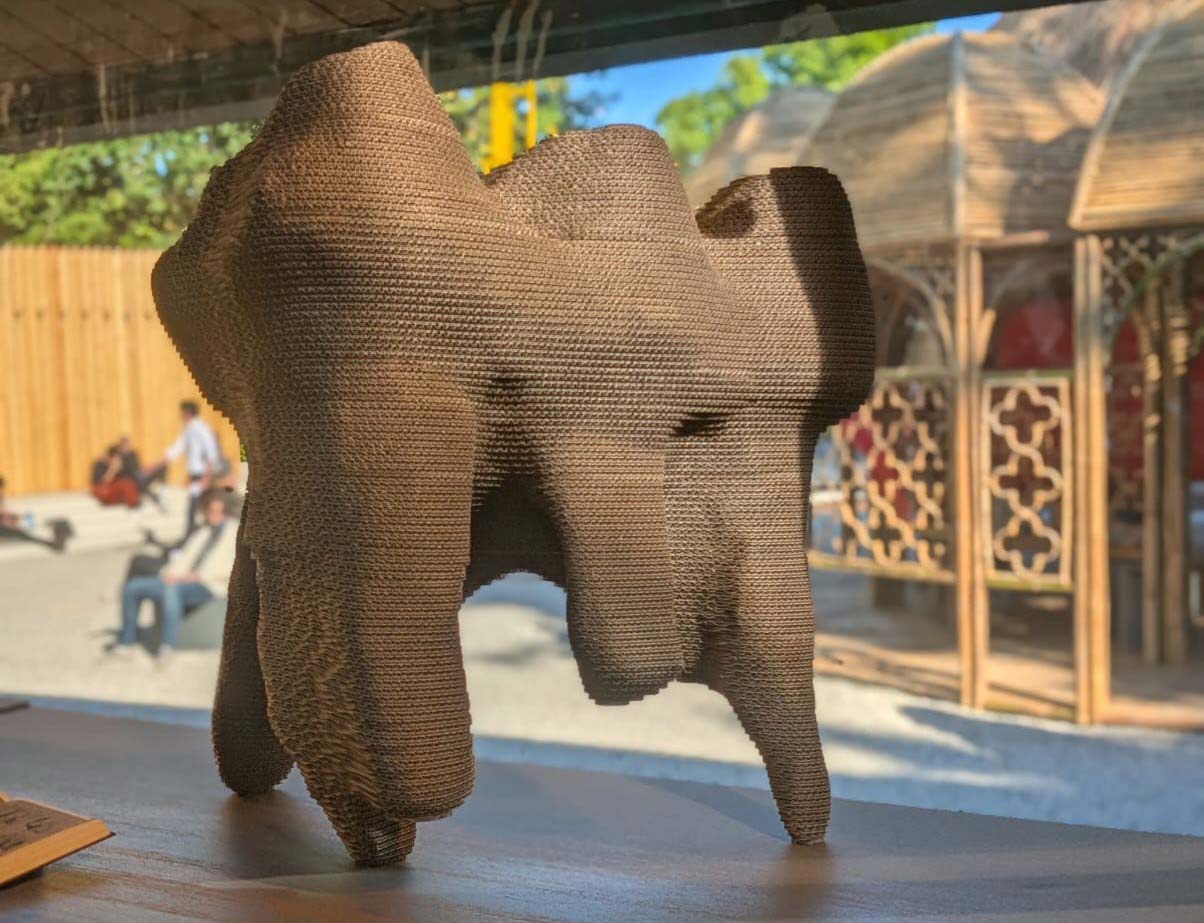
The Boundless Potential of Possible Mediums
The Boundless Potential of Possible Mediums
Some of the most exciting voices in architecture excel by challenging the established convention. Possible Mediums, an exhibition at the Taubman College of Architecture and Urban Planning’s Liberty Gallery until February 26th, seeks to reach new audiences by showcasing new ways of communicating architecture. Building upon the momentum from the conference of the same name, Possible Mediums the exhibition is the product of exploring new and speculative architectural mediums.
“It began over a year ago when four of us from UCLA found ourselves teaching and working in the Midwest,” says Adam Fure, Assistant Professor of Architecture at U-M’s Taubman College and one of the creators of the exhibition. “We were excited about where we were and wanted to capitalize not only on our proximity, but on the novel and emerging design trends we were seeing at our schools.”
Fure is referring to the inaugural Possible Mediums conference which took place February 2013 at The Ohio State University. The conference, co-chaired by Fure along with Kelly Bair (University of Illinois-Chicago), Kristy Balliet (The Ohio State University), and Kyle Miller (University of Kentucky) brought together 18 designers, 120 students, and invited guests, John McMorrough and Jeffrey Kipnis, to participate in design workshops and formal discussions surrounding the question of mediums in contemporary architecture.
“In our view, the conventional mediums of architectural production are rapidly changing in order to captivate new audiences. To mobilize this exciting wave of speculative architecture, we invited seventeen designers to join us in an ongoing effort to highlight, discuss, and extend these provocative trends,” said organizers Adam Fure, Kelly Bair, Kyle Miller, and Kristy Balliet. “We received such tremendous feedback that we wanted to keep the discussion going. This structure reflects our approach to understanding and organizing contemporary architectural discourse and provides a great opportunity to organize the event based on the strengths of those involved.”
Preserving the initial conference’s four key areas of Active Models, Excessive Volumes, Figural Projections, and Tactile Objects, Taubman’s Possible Mediums also exhibits new pieces from each designer created specifically for the event.
The first area, Tactile Objects, is a medium where “subjective responses are not an unintended side effect of form, [but rather] a disciplined obsession. It follows that the idiosyncratic formal and material traits of objects are oriented toward those murky zones of architectural subjectivity that might be uncovered or provoked through strange physical qualities.”
Excessive Volumes, the second area, “looks at defining and containing volume [as] a core aspect of architecture, one that was all but eliminated in the modernist turn toward universal space. Through sophisticated applications of the latest digital and material technologies, and their intrinsic modes of layering, the work of this group reveals the immense possibilities of three-dimensional depth and detail.”
The third area, Active Models, as one born from the “second phase of the digital turn…[where] robotics and interactive technologies are offering designers new means of linking digital and physical environments. Work in this medium employs embedded computation, continuous measurement, and kinetics to create novel forms of visual, spatial, and formal attraction. These literal forms of dynamism evolve architecture’s internal means and methods while demonstrating new possible effects on the world. Through active models, designers revamp age-old traditions of drawing and modeling, for example, drawing with robots or making models move.”
Figural Projections, the last of the four areas, aims to “concoct fantastical narratives, confuse visual perception, and remix historical precedent…Asserting the continuous fecundity of architecture’s core, these designers rely on long-standing conventions of drawing and modeling, yet direct them toward speculative ends. Historical techniques are maintained and also tweaked, added to, or subtly disrupted with external elements, opening them up to new output. Through narrative schemes, literary references, and pop cultural riffs, figural projections offer uncanny formal readings—common objects are rendered foreign while foreign objects remind us of animals, everyday objects, and in some cases, our own bodies.”
The timing for Possible Mediums could not be better. “Many believe that architecture is in a state of crisis,” says Fure. “Many believe architecture’s current diversity indicates a lack of practical, ideological, or pedagogical purpose, threatening the field’s relevance, even its existence. As young practitioners wholly committed to our discipline’s longevity, we refuse to accept projections of architecture’s demise. Possible Mediums is our effort to assure and shape our collective, possible futures.”
The Possible Mediums exhibition was organized and designed by Assistant Professor Adam Fure along with Kelly Bair, Kyle Miller, and Kristy Balliet. Ellie Abrons, Andrew Atwood, Brennan Buck, Angie Co, Justin Diles, David Freeland, Benjamin Freyinger, Andrew Holder, Mariana Ibanez, Jason Kelly Johnson, Thomas Kelley, Simon Kim, Jimenez Lai, Michael Loverich, Anna Neimark, Carrie Norman, Antonio Torres, and Michael Young were contributors. The exhibition was supported by the Graham Foundation and, in Ann Arbor, sponsored by the Johe Endowment Fund.
View the complete set of images related to Possible Mediums on our Flickr site.









